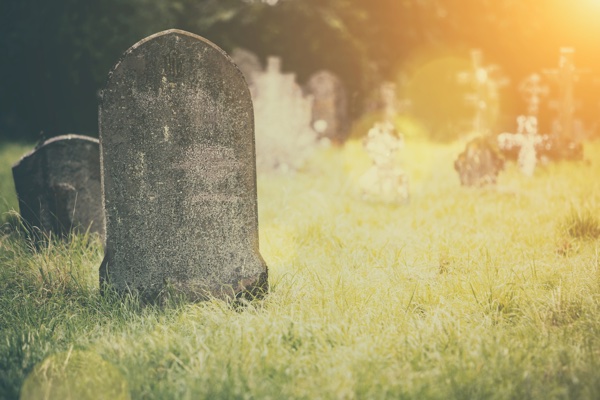We had a tradition of going to the graveside Easter morning.
Somewhere between sunrise service, Easter breakfast, the overfilled sanctuary of Easter service, and the hunt for Easter baskets, we squeezed it in—my mom, little sister, two brothers, and me. Standing in snow, shivering against the Minnesota cold, I would open my Bible and find words of resurrection:
On this mountain he will destroy the shroud that enfolds all peoples, the sheet that covers all nations; he will swallow up death forever.
The sovereign LORD will wipe away the tears from all faces; he will remove the disgrace of his people from all the earth. The LORD has spoken.
In that day they will say, “Surely this is our God; we trusted in him, and he saved us. This is the LORD, we trusted in him; let us rejoice and be glad in his salvation.” (Isaiah 25:7–9)
I remember the tears in facing again the terrible reality of what we’d lost. Tears that would one day be wiped away.
I remember the power of these words and others like them, the power of hope.
Perhaps it seems strange for a young family, kids in elementary through high school, to go to their Daddy’s grave on Easter morning. But when your life has been touched by death, you need more than chocolate bunnies and egg decorating to mark this day. Even kids need to remember that we have reason to hope.
On this day, another group went to a graveside in mourning and found it empty.
On this day, instead of death, they found life.
The cross may be the Christian symbol, but the empty grave tells its message: Death doesn’t have the final word. Not then. And not now. God’s power carries us through the path of suffering, to life on the other side. This is his heart. This is his plan.
In the strain of my adult days, I tend to forget that Good Friday continues on to Easter. My story has given me a burden for those who suffer. I understand God’s compassion for those in pain; I’ve felt it personally. I have sensed Christ’s willingness to suffer alongside the suffering world, and found comfort there. But if this is my only picture of Jesus, I am not seeing him fully. I need to gaze on the Jesus of Easter morning, the Jesus with power to overcome suffering. Whether the situation is girls locked in sexual slavery or the hopeless quagmire of generational poverty, a society at war with each other, or a broken home, God is not powerless. Do I still believe this? He is no stranger to suffering. And in some mysterious and unexpected way, he will overcome.
More than any other day, Easter is our clarion call to have hope for the world. And it’s a concrete reminder to hold onto hope for our own lives as well. This isn’t about the power of positive thinking. It’s about a real demonstration of God’s power and a promise: “There will be no more death or mourning or crying or pain … I am making everything new!” (Revelation 21:4–5)
On Easter morning, I go back to the graveside—if not in real life, then in my mind. I relive the tears of loss and my overwhelming need for hope. And I experience again that some tears are healing. It was through those icy Easter cemetery tears that I learned the power of resurrection. Not just the resurrection of Jesus, but resurrection in my own life.
ABOUT THE AUTHOR
Megan Beehler is a Minnesota girl living in Aurora, CO, where she works with refugees alongside CRM’s InnerCHANGE Denver team. She has been part of CRM’s Communications team since 2015, and loves hearing the powerful stories of what God is doing around the world in partnership with his people in CRM.
